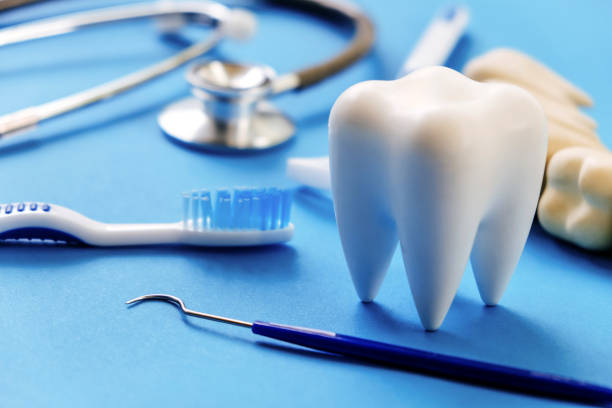Initially, the concept of dental surgery may be reduced in our minds to be nothing more than tooth removal. However, this field in reality is much more expansive, encompassing a broad array of processes designed to improve both the functionality and aesthetic appearance of your mouth and smile. The purpose of this article is to delve into the various types of dental surgery and offer a fundamental understanding of these crucial dental procedures.
The operations performed under the umbrella of dental surgery can serve a multitude of functions, including addressing dental illnesses, augmenting oral function, or even enhancing the look of one’s smile. The variety ranges from simple tooth extraction to intricate dental rebuilds and implants. Every surgical operation is carried out by dedicated dental specialists who are committed to maintaining excellent oral health for patients.
One critical thing to note is that dental surgeries do not exist solely to enhance physical appearance. They carry immense health significance as well. Good oral health is inextricably linked to overall health, and neglecting dental problems could initiate other severe health conditions. Therefore, gaining a deeper understanding of dental surgeries becomes pivotal in upholding excellent oral health and, by extension, overall well-being.
Oral Surgery: A Closer Look
Contents

Oral surgery is a critical aspect of dental health care, covering an array of procedures. These include yet are not limited to oral extractions, dental implants, and jaw-related procedures. It sets the foundation for managing several dental concerns outside regular oral hygiene routines.
There exist a variety of oral surgery procedures, each designed to address a unique issue. These procedures can handle a wide variety of issues, from the correction of facial injuries, cysts, and oral tumors, to simpler tasks such as teeth extractions. The surgeries call for professional dental surgeons who possess not only the necessary skills but also a deep understanding of the human mouth’s complex structure.
In simple terms, oral surgery commonly serves as the alternative solution when regular dental treatments or procedures cannot rectify certain dental problems. Despite providing a plethora of solutions, remember that the response to any dental issue begins with basic measures – consistent oral hygiene and regular dental check-ups.
Endodontic Procedures

Endodontics deals with issues affecting the tooth’s interior, particularly problems involving the dental pulp – a soft tissue substance in the tooth’s interior. Under endodontics, the most common procedures include the root canal and endodontic surgery.
A root canal is a dental procedure designed to salvage a severely infected tooth by ejecting the diseased dental pulp. On the other hand, endodontic surgery, often regarded as an apicoectomy, takes root canal treatment a notch higher by extracting the apex (or root tip) of an infected tooth, thereby treating the infection.
Endodontic procedures come into play when cavities progress significantly and reach the tooth’s pulp tissue, usually characterized by severe toothache and sensitivity. These procedures can relieve pain and save affected teeth when performed correctly hence why it requires a specialist’s attention called an endodontist.
Prosthodontic Procedures

Prosthodontics involves dental procedures aiming to reinstate your mouth’s function and aesthetics using dental prosthetics, such as dental implants or dental veneers.
Dental implants replace missing teeth by emulating the structure of a real tooth, providing not only functional benefits but also preserving facial aesthetics. Dental veneers, on the other hand, are thin porcelain laminates bonded to the tooth to enhance its aesthetics by improving its color and shape.
Prosthodontic procedures are carried out when there are significant cases of tooth loss due to dental diseases, accidents, or conditions reducing the aesthetics. A prosthodontist, a dental aesthetic expert, performs these procedures.
Oral and Maxillofacial Procedures

Oral and Maxillofacial procedures encompass surgeries involving the face, jaw, and mouth’s hard and soft tissues. The common procedures here include corrective jaw surgery and extraction of impacted teeth.
As the name suggests, corrective jaw surgery corrects jaw and facial structure impairments, while the extraction of impacted teeth involves the removal of teeth that haven’t correctly broken through the gum – a condition common with wisdom teeth.
Oral and Maxillofacial Procedures are considered in situations of significant facial trauma, congenital defects, or specific oral diseases affecting the face, jaw, and mouth.
Periodontal Procedures

In Periodontics, dental procedures involve the structures supporting the teeth like the gums and bones. Chief procedures within this category include gum grafts and crown lengthening.
Gum grafting is employed to rectify gum recessions, while crown lengthening involves exposing more of a tooth by receding the gum tissue and bone surrounding the specific teeth.
Periodontal Procedures are important in tackling infections in the gums, which threaten the oral structures supporting the teeth. A specialist known as a periodontist typically conducts these procedures.
Most Common Dental Surgeries

The most common dental surgeries include:
- Tooth extraction
- Dental implants
- Root canal therapy
- Gum grafts
- Wisdom tooth removal
These surgeries are common because they meet prevalent dental issues encountered by different individuals. The necessity for each depends on unique oral health problems, exhibiting the need for proper dental consultation before undertaking any dental surgery procedure.
From the comprehensive insight presented above, it’s evident that dental surgery not only focuses on enhancing your smile but also plays a critical role in maintaining good oral and overall health. The complexity of dental surgery requires the expertise of professionals dedicated to assuring your oral health. Therefore, anyone considering any surgery type should always seek professional advice before making any decisions. A beautiful smile goes beyond aesthetics – it signifies good health.

